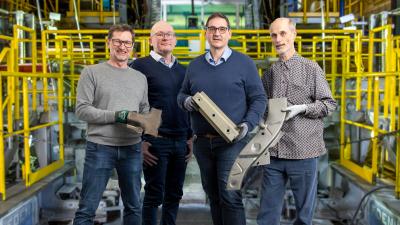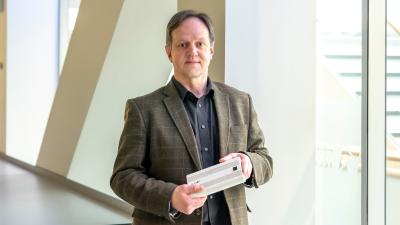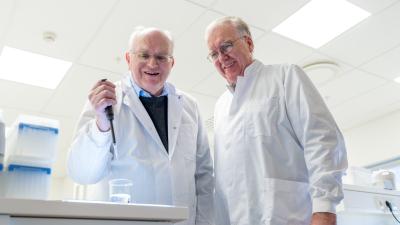Patricia de Rango, Daniel Fruchart, Albin Chaise, Michel Jehan, Nataliya Skryabina
A safe and sustainable way to store hydrogen
Winners of the European Inventor Award and Popular Prize 2023
The team’s ground-breaking method uses magnesium hydride mixed with metal additives and graphite to compress hydrogen into solid discs for easy storage in specially designed tanks. To store and release hydrogen requires less energy than other methods, and the hydrogen is also released from the tanks at relatively low pressure – around two bars. The discs are stable when handled and do not ignite when exposed to fire. Crucially, they do not lose hydrogen over time and can be stored for long periods, making green hydrogen more accessible as the world combats climate change.
Team effort
De Rango not only designed the disc storage tanks but also analysed the tanks' development processes and the structural and magnetic characterisation of the chemical compounds involved. Chaise introduced the mixture and compact processes and studied the discs’ thermal and fluidic properties to validate their performance. Fruchart researched magnesium hydride, the atomic structure of which would store the hydrogen. Magnesium is recyclable, making the hydride more sustainable. Skryabina led research into hydrogen’s reactions with other materials and magnesium hydride's basic physical and chemical properties. And so, after developing an interest in hydrogen storage, Fruchart contacted Jehan. Jehan’s company at the time, Metal Composite Powder (MCP) Technologies, developed the industrial technology needed to produce a greater amount of magnesium hydride.
Early research was conducted at CNRS, which applied for the initial European patents. The technology was transferred to partners McPhy and, later, JOMI-LEMAN to scale up and commercialise the product. Skryabina emphasised the role of teamwork in this industry-academia collaboration: "I think our team is like a musical orchestra. Everyone is like some special instrument. We can play ourselves, but it is not exactly music, only a small part of it."
Media gallery
Patent numbers:
EP1993949B1, EP2024274B1, EP2593401B1, EP2244970B1 and EP2235424B1
Press materials
Access materials for journalists
Press release: French research group win the European Inventor Award 2023 for a safer and more efficient hydrogen storage solutionPress release: A new approach to storing hydrogen safely: French research group selected as a finalist for the European Inventor Award 2023 Press photos/videos (for MXF format videos, please contact press@epo.org)
Contact
European Inventor Award and Young Inventors Prize queries:
european-inventor@epo.org Subscribe to the European Inventor Award newsletterMedia-related queries:
Contact our Press team#InventorAward #YoungInventors







